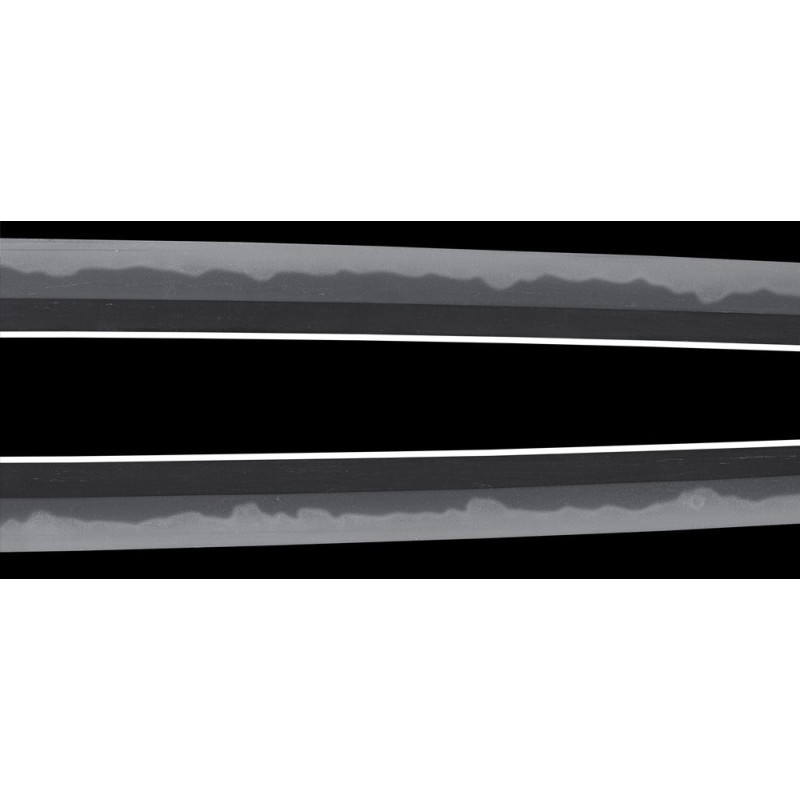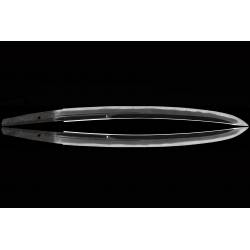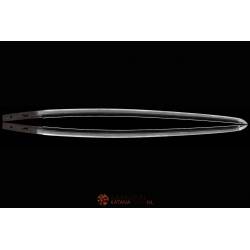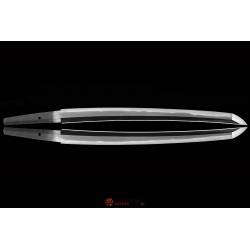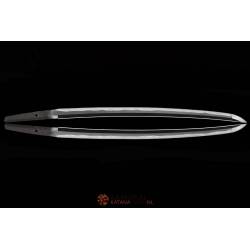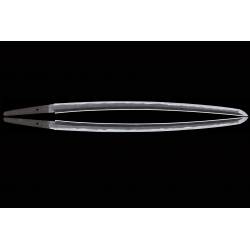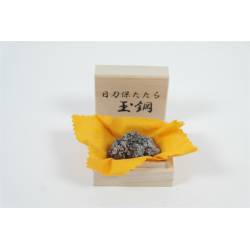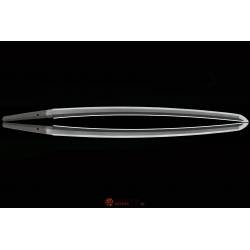Harima Daijyo Fujiwara Shigetaka Katana + NBTHK
This is a Japananese katana by Harima Daijyo Fujiwara Shigetaka, who worked around the Edo Period, around Kanbun era (1661-1673) with NBTHK papers.
Sold
This is a Japananese katana by Harima Daijyo Fujiwara Shigetaka, who worked around the Edo Period, around Kanbun era (1661-1673).
Shigetaka is a Smith of the second Golden age of Sword manufacturing, the so called "Keisho Shinto Period" .The smith Shigetaka (second generation) came from Echizen domain and they made katana’s up to 11th generations.
The signature on Omote side is in front is long character that starts from an official district Harima-daojō 播磨大掾 title granted by the Imperial Court, the name of clan Fujiwara 藤原 and smith name Shigetaka 重高.
Ura side: Echizen-ju 越前住
This particular katana is well balanced. It has been preserved in good condition, and this in combination with the maker's reputation has resulted in the Tokubetsu Hozon designation.
The Jigane is well forged with Ko Itame Hada well grained with jinie (sprinkled with crystals). There is a strong and nice Nagareru with a dark and clear Jigane. In the Gunome Midare hamon you can find Nie and Ashi in the Ha. Suguta is Shinogi-zukuri with a shallow Tori-zori. (0,8 cm). You can find a Chu Kissaki and the blade is really in good condition. Two mekugi ana in the Nakago.
This well made sword comes in a Shirasaya with Koshirae and is in a fine polish.
Blade length : 64.45 cm
Sori : 0.8 cm
Mekugi : 2
Motohabi: 2,95 cm
Motokasane: 7 mm
Sakihabi: 2,1 cm
Sakikasane: 4 mm
Koshirae:
The Tsuba is round shaped iron Tsuba with a flower is engraved. The Menuki, Fuchi and Kashira is shakudo with an egg plant. The Fuchi and Kashira is dragon engraved with gold color. A black roiro Saya.
The shirasaya is made of ho wood and you find some information about the sword blade written on it (sayagaki).
This Japanese Wakizashi is authentic, and the matching NBTHK papers attesting the quality and authenticity.
Inclusive whole Oshigata. Oshigata is used by Japanese appraisers since before the Japanese middle ages, to record all the metallurgical activities in the steel of a Japanese sword that make it unique to any other sword.
When handling a Katana, one should consider the following few tips:
- Never touch the blade with bare skin! If the need arises for handling the blade, be sure to use a silk cloth. Only handle the munesuji. One may do this, by holding the tsuka in one hand and resting the munesuji on the silk cloth with the other hand. When viewing the sword the blade (Hasaki) should face upwards.
- During handling of a katana, avoid breathing or talking directly over the blade! Moisture may cause blemishes or pitting on the steel surface.
- Never place the sword on its point (kissaki)
- During exchanges, or passing of a katana from one person to another, do not point the blade's tip at the person receiving the sword, nor have the blade(Hassaki) facing upwards.
- Before passing a katana to another person, it is best to cover the blade with its saya!
16 other products in the same category:
You might also like




